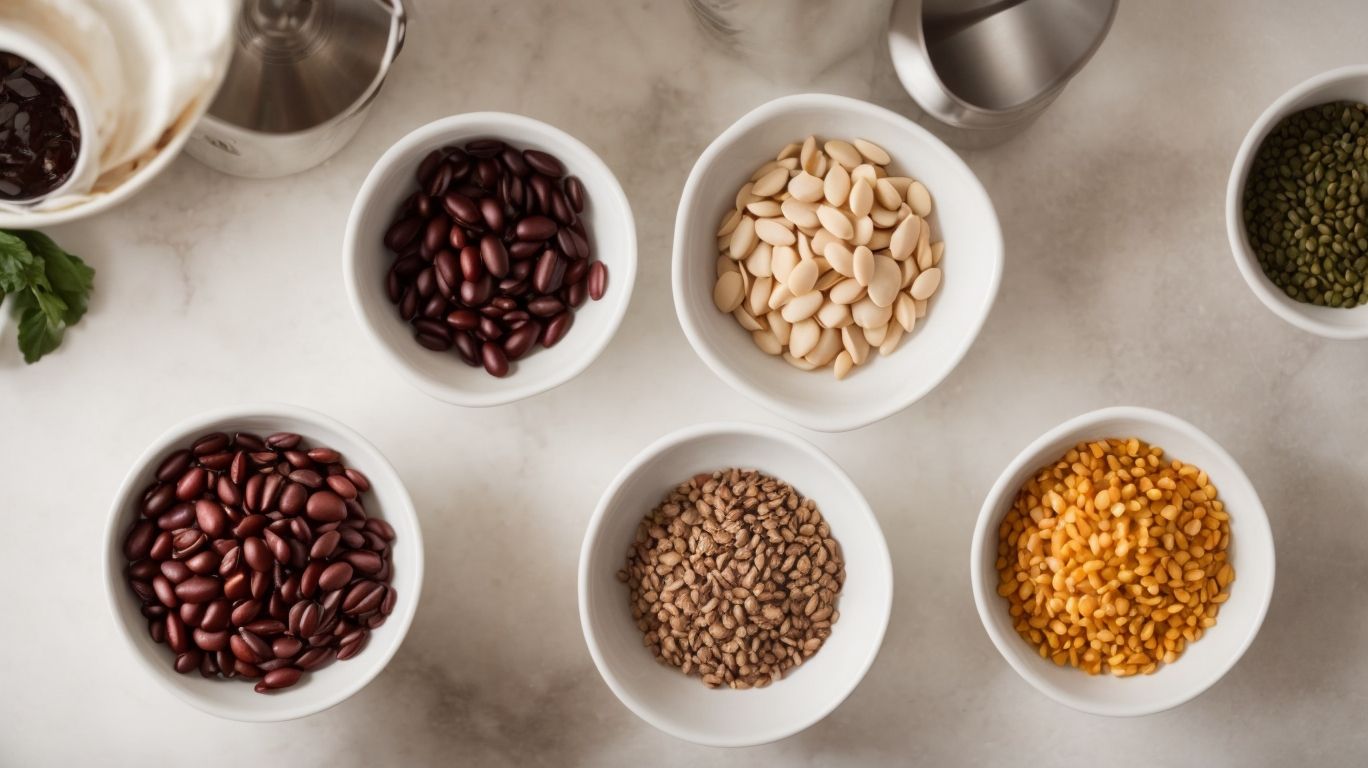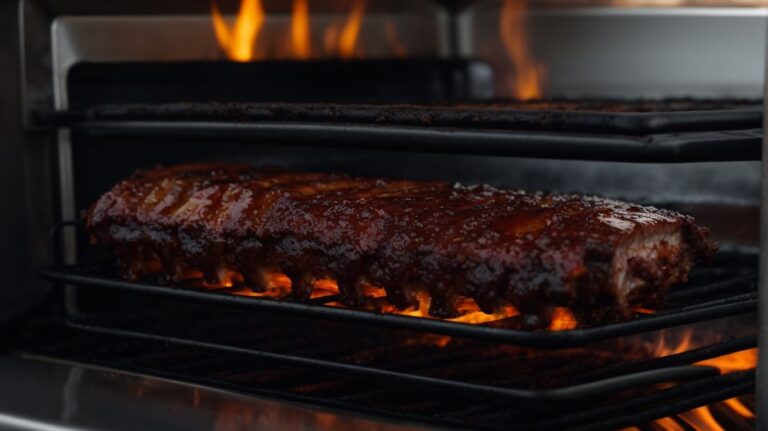How to Cook Beans After Quick Soak?
Are you looking to cut down on the time it takes to prepare beans for your favorite recipes? Quick soaking beans can be a game-changer in the kitchen!
We discuss the benefits of quick soaking beans, the types of beans that can be quick soaked, and how to properly quick soak and cook them.
Discover some helpful tips for cooking quick soaked beans and explore delicious recipes you can try. Learn more about this time-saving cooking technique!
Key Takeaways:
Why Should You Quick Soak Beans?
Quick soaking beans is a convenient and time-saving method that can help reduce cooking time and enhance the health benefits of beans. By soaking, you can also decrease phytic acid content, making the beans more digestible. According to renowned culinary expert Michael Ruhlman, quick soaking is a valuable technique in preparing legumes.
One of the key advantages of quick soaking beans is the significant reduction in cooking time. This method softens the beans faster, cutting down the time required to achieve the desired texture in dishes like stews or soups. The quick soaking process retains more of the vital nutrients present in the beans, ensuring that you get the maximum nutritional benefits.
Reducing the phytic acid content through quick soaking contributes to better absorption of essential minerals by the body. Phytic acid can hinder mineral absorption, so by decreasing its levels, you enhance the overall nutritional value of the beans. Michael Ruhlman emphasizes how this simple step can elevate the quality of bean-based dishes, making them not only delicious but also highly nutritious.
What Types of Beans Can Be Quick Soaked?
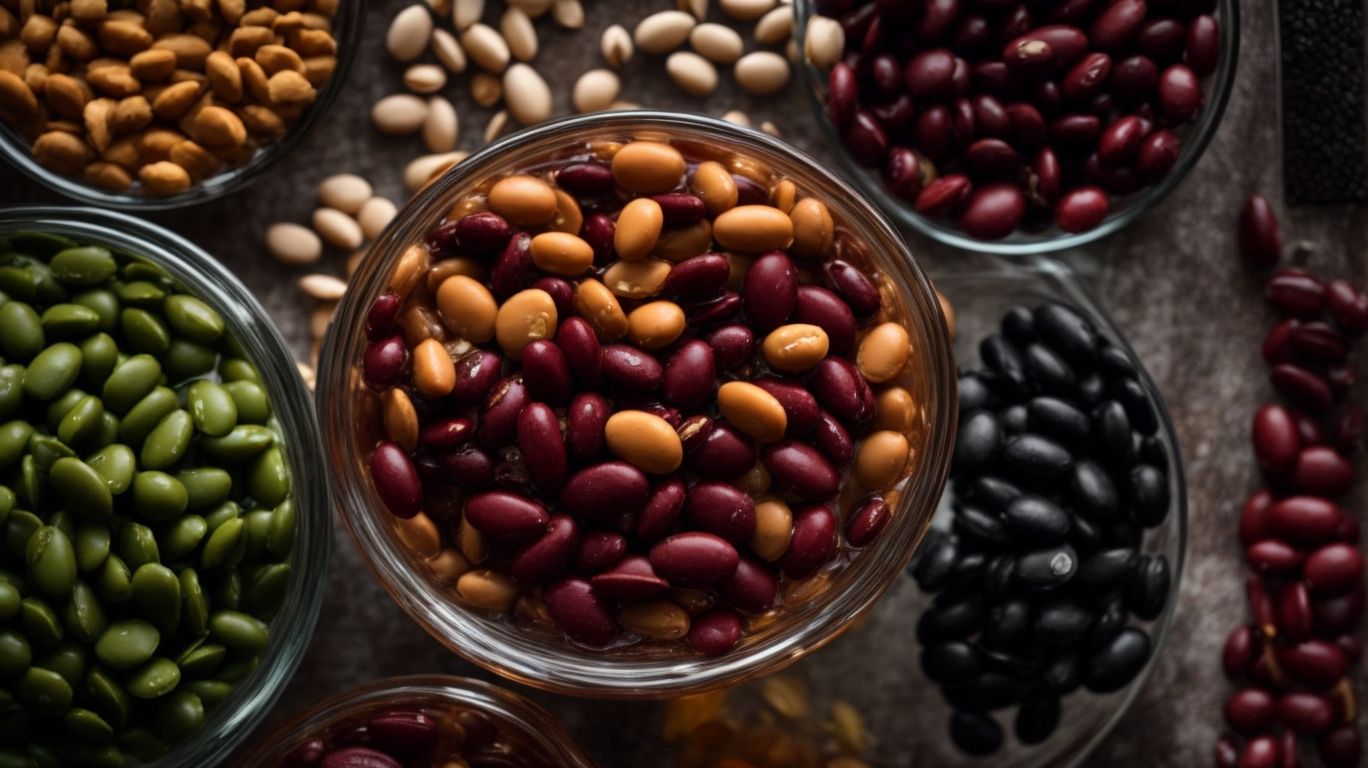
Credits: Poormet.Com – Alexander Thompson
Various types of beans can be quick soaked to expedite the cooking process and unlock their flavors. Common beans suitable for quick soaking include pintos, chickpeas, and other legumes. This method is particularly useful for preparing dishes like hummus or authentic refried beans.
Apart from pintos and chickpeas, black beans, navy beans, and kidney beans also respond well to quick soaking, making it a versatile technique for different textures and flavors.
- For a delicious hummus recipe, simply soak chickpeas for a couple of hours, simmer until tender, then blend with tahini, lemon juice, and garlic for a creamy dip.
- Similarly, quick-soaked pintos can be transformed into flavorful refried beans by cooking with onions, garlic, and spices until creamy and smooth.
How to Quick Soak Beans?
Quick soaking beans involves a simple process that can be done on the stovetop or in a pressure cooker.
The first step is to rinse and sort the beans thoroughly to remove any debris or impurities. Once cleaned, place the beans in a pot and cover them with double the amount of water. For stovetop method, bring the water to a rolling boil, then reduce the heat to low and let the beans simmer for about 1-2 hours until they are softened but still slightly firm.
If you opt for the pressure cooker method, after adding water and beans, seal the cooker and set it to high pressure for 2 minutes. Let the pressure release naturally for about 10-15 minutes to allow the beans to fully absorb flavors and attain a creamy texture.
Step 1: Rinse and Sort the Beans
The initial step in quick soaking beans is to thoroughly rinse and sort them to remove any debris or impurities. This process helps ensure the beans are clean and ready for the subsequent soaking method.
When rinsing the beans, it is important to use cold water to wash away any dirt or dust. Sorting the beans involves checking for any stones, discolored beans, or other foreign objects that may have inadvertently gotten mixed in.
This step not only contributes to the overall cleanliness of the beans but also ensures that the final dish will have a consistent texture and flavor, without any unwanted surprises.
Step 2: Add Beans and Water to a Pot
Once the beans are rinsed and sorted, they are placed in a pot with an adequate amount of water to facilitate the quick soaking process. The water should cover the beans generously to ensure proper hydration.
Make sure the water level is at least two inches above the beans to allow for expansion during soaking. This ratio of water to beans is crucial in achieving the desired texture and flavor in your dish. Properly submerged beans absorb water more efficiently, resulting in a consistent and thorough soaking. It’s recommended to soak the beans for a minimum of four hours for optimal softening before cooking. This step is vital for enhancing digestibility and reducing cooking time later on.
Step 3: Bring to a Boil and Simmer
After adding the beans and water to a pot, bring the mixture to a boil and then reduce the heat to a simmer. This gentle cooking process helps the beans absorb water and soften for further preparation.
During the boiling stage, the high heat causes the water molecules to move faster, which helps the beans start absorbing moisture rapidly. This initial intense heat softens the outer layer of the beans, making them more receptive to hydration.
Once the heat is lowered to a simmer, the beans continue to absorb water, but at a slower, more controlled pace. The simmering stage allows the beans to tenderize gradually, ensuring they cook evenly and reach the desired level of softness without becoming mushy.
Step 4: Drain and Rinse the Beans
Once the beans have been simmered to the desired tenderness, drain the excess water and rinse the beans under cold water to halt the cooking process. This step prepares the beans for further cooking or incorporation into recipes.
After draining and rinsing, it is crucial to ensure that the beans are well-drained to prevent any excess moisture in the recipes. Place the beans in a colander or sieve and gently shake to remove any remaining water. Avoid vigorous rinsing as this could damage the beans’ delicate texture.
Once the rinsing is complete, you can now proceed with the desired recipe. Whether it’s adding them to a salad, stew, or a soup, the beans are now ready to absorb the flavors while maintaining their firmness and shape.
How to Cook Quick Soaked Beans?
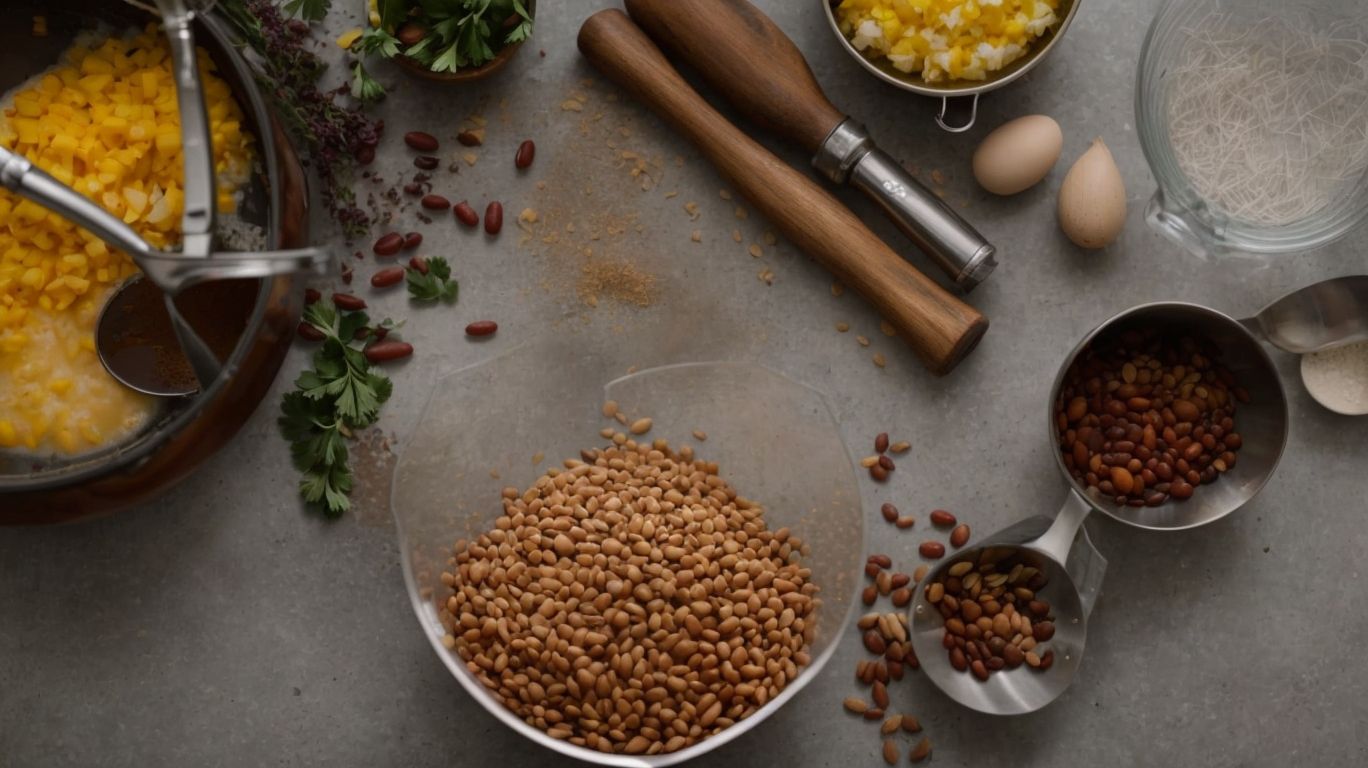
Credits: Poormet.Com – Gerald Scott
Cooking quick soaked beans is a straightforward process that involves preparing the beans for further recipes or consumption. The cooking time may vary depending on the type of beans and desired tenderness. Adding flavorings and following multicooker instructions can enhance the taste and texture of the cooked beans.
After soaking, cooking quick soaked beans typically takes around 20-30 minutes on the stovetop, but this can extend for heartier beans such as chickpeas or kidney beans. For added depth of flavor, consider incorporating ingredients like garlic, onions, herbs, or spices during the cooking process. When using multicookers like Instant Pot, set the appropriate pressure-cooking time according to the specific bean type for optimal results. Remember to release pressure carefully to prevent excessive foaming or spills.
Step 1: Prepare the Beans
Before cooking quick soaked beans, ensure they are adequately prepared for the subsequent cooking method. This may involve draining excess water, seasoning the beans, or following specific recipe instructions for further culinary creations.
Properly prepping quick soaked beans is essential to achieve the desired texture and flavor in your dishes.
- Rinsing the beans thoroughly helps remove any impurities.
- Seasoning with salt or aromatics during soaking can enhance the taste profile.
- Some recipes may call for overnight soaking for softer beans, while others suggest a quicker soak method for convenience.
Whichever method you choose, make sure to rinse and drain the beans before cooking to eliminate any remaining soaking liquid that may affect the dish’s consistency.
Step 2: Add Water and Bring to a Boil
To start the cooking process, add water to the quick soaked beans in a pot or cooker, and bring the mixture to a boil. The boiling stage initiates the further softening and flavor infusion of the beans.
The provided text is already well-formatted with the necessary
tags. No further formatting is required.
Step 3: Simmer Until Beans Are Tender
Once the beans reach a boil, reduce the heat to a simmer and allow them to cook until they achieve the desired tenderness.
This slower cooking method ensures the beans are fully cooked through and ready to be incorporated into various dishes. To monitor the beans’ texture, you can gently press one between your fingers; it should yield with a slight resistance, showcasing a creamy interior. If the beans are still too firm after the initial simmering time, prolong the cooking time in small increments or add a bit more water to maintain the simmering stage without scorching the beans.
Step 4: Drain and Serve
After the beans have been cooked to perfection, drain any excess liquid and serve them as a standalone side dish or as a component in a flavorful recipe. Proper draining ensures the beans maintain their ideal texture and consistency.
Once the excess liquid has been carefully drained, consider seasoning the beans with a sprinkle of salt, a drizzle of olive oil, and a dash of fresh herbs to enhance their flavor profile. These cooked beans can be a versatile addition to salads, soups, stews, or even used as a topping for toasts or tacos. You can mix them with roasted vegetables, quinoa, or rice for a nutritious and satisfying meal.
You can also blend the beans with some garlic, lemon juice, and tahini to create a creamy and delicious bean dip that pairs perfectly with crunchy vegetables or pita chips.
What Are Some Tips for Cooking Quick Soaked Beans?
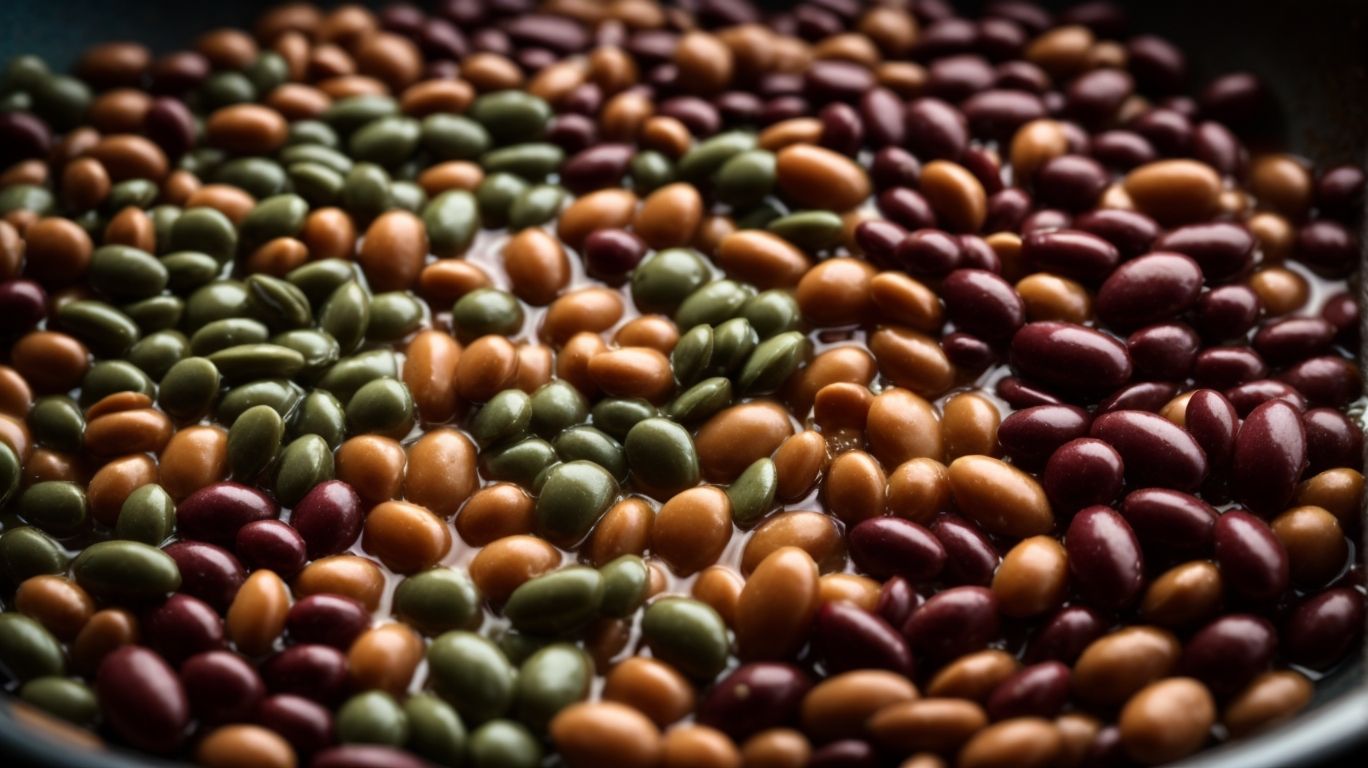
Credits: Poormet.Com – Paul Gonzalez
When cooking quick soaked beans, consider using freshly soaked beans for the best results. Enhance the flavor with seasonings and aromatics, adding depth to your dishes. Adjusting the cooking method to align with your recipe can elevate the final outcome.
If you want to infuse the beans with rich, savory flavors, opt for herbs like rosemary, thyme, or bay leaves during the cooking process. These aromatic additions can transform a simple dish into a culinary delight. Experiment with different seasonings such as cumin, paprika, or garlic powder to tailor the taste to your preferences.
For soups and stews, simmer the soaked beans gently to allow the flavors to meld together beautifully. If you are preparing salads or dips, a quick boil followed by soaking can maintain a firm texture for your dish. Understanding the cooking time and method suited to your dish will ensure that the beans are perfectly cooked and bursting with flavor.
Use Freshly Soaked Beans
For superior taste and texture, it is recommended to use freshly soaked beans in your cooking endeavors. This ensures that the beans retain their moisture and cook evenly, resulting in a more satisfying culinary experience.
When you soak beans before cooking, you are essentially rehydrating them, which allows them to cook more efficiently. The moisture absorbed during soaking helps the beans soften and become creamy when cooked.
To store freshly soaked beans, simply keep them in an airtight container in the refrigerator, ensuring they stay moist and fresh until ready for use. Remember not to let soaked beans sit for too long, as they can ferment and lose their ideal texture.
Add Flavor with Seasonings and Aromatics
Elevate the taste profile of quick soaked beans by incorporating a variety of seasonings and aromatics during the cooking process. Herbs, spices, and aromatic vegetables can enhance the overall flavor and depth of your bean dishes.
In terms of herbs, fresh parsley, cilantro, or chives can add a burst of freshness to your bean salads or stews. Spices like cumin, smoked paprika, or a pinch of cayenne can bring warmth and complexity to your bean-based soups or chilis. Don’t shy away from aromatic vegetables such as onions, garlic, and bell peppers, which can create a rich foundation of flavors for your bean dishes.
Experimenting with different flavor combinations like a Mexican-inspired blend of cumin, garlic, and oregano or a Mediterranean mix of rosemary, thyme, and lemon zest can truly elevate your culinary creations.
Add Acid to Help Soften Beans
To aid in the softening process of quick soaked beans, consider adding acidic ingredients like vinegar or citrus juice during cooking. The acid helps break down the beans’ structure, resulting in a creamier texture and improved digestibility.
Acid is a key player in the cooking process of beans, as it acts as a tenderizer, making them more palatable and easier to digest. When acidic elements come into contact with beans, they work to reduce the beans’ phytic acid content, which can inhibit nutrient absorption.
The incorporation of acidic components can enhance the overall flavor profile of the beans, adding a subtle tang that complements various dishes. Common acidic options to use include white vinegar, lemon juice, or tomato products, each offering a distinct taste to the final dish.
Use the Right Cooking Method for Your Dish
Selecting the appropriate cooking method based on your culinary creation is essential when preparing quick soaked beans.
Consider the recipe requirements and the desired outcomes you wish to achieve.
For traditionalists, the stovetop method offers a slow, simmering process that allows flavors to meld gradually, perfect for dishes like soups or stews.
On the other hand, pressure cooking is a time-saving option, significantly reducing cooking time while retaining nutrients and flavors, ideal for busy weekdays.
Meanwhile, the multicooker provides versatility with various cooking modes, enabling you to sauté, simmer, or pressure cook, making it a convenient all-in-one solution.
Each method presents unique benefits, so choose wisely to elevate your culinary creations.
Can You Freeze Quick Soaked Beans?
Freezing quick soaked beans is a viable option for extending their shelf life and preserving their freshness.
When properly frozen and stored, these beans can be conveniently used in future dishes, saving time and ensuring a ready supply of cooked legumes. To freeze quick soaked beans effectively, start by spreading them in a single layer on a baking sheet and placing them in the freezer. Once frozen, transfer them into airtight containers or ziplock bags to prevent freezer burn and maintain quality. Don’t forget to label the containers with the date of freezing for easy tracking.
When it’s time to use the frozen beans, simply remove the desired portion from the freezer and thaw in the refrigerator overnight. Avoid thawing at room temperature to prevent bacterial growth. These beans can be added directly to soups, stews, or salads without the need for pre-cooking, making them a convenient ingredient to have on hand.”
What Are Some Recipes You Can Make with Quick Soaked Beans?
Quick soaked beans can be utilized in a myriad of recipes, from classic dishes like black bean soup to contemporary favorites like Mediterranean hummus. The versatility of quick soaked beans opens up a world of culinary possibilities for creating flavorful and nutritious meals.
For a comforting and hearty meal, try incorporating quick soaked beans into a vibrant Mexican-inspired chili, garnished with fresh cilantro and a dollop of creamy avocado.
Alternatively, you can whip up a refreshing bean salad with cherry tomatoes, cucumbers, and a zesty lemon vinaigrette as a light and healthy side dish.
Transform your breakfast routine by making a flavorful bean and veggie hash, perfect for starting your day with a nutritious boost of protein and fiber.
Frequently Asked Questions
What is a quick soak and how do I do it?
Quick soaking beans is a shortcut method to reduce the cooking time of dried beans. Simply place the desired amount of beans in a pot, cover with water, and bring to a boil for 2 minutes. Then, remove from heat and let sit for 1 hour before draining and cooking as usual.
Why should I quick soak my beans?
Quick soaking beans not only saves time, but also helps to break down some of the indigestible complex sugars in beans, making them easier to digest.
Can I quick soak any type of bean?
Yes, this method works for all types of dried beans, such as black beans, kidney beans, pinto beans, and chickpeas.
How long do I need to cook the beans after quick soaking them?
The cooking time will vary depending on the type and age of the beans, but typically it will take about 30-45 minutes after quick soaking to fully cook the beans.
Do I need to discard the soaking water?
It is recommended to discard the soaking water and use fresh water for cooking. This helps to remove any impurities and can reduce the chances of getting gassy after eating beans.
Can I use a pressure cooker to cook beans after quick soaking?
Yes, using a pressure cooker after quick soaking can significantly reduce the cooking time of beans. Follow the instructions for your specific pressure cooker, but typically it will take about 8-10 minutes under high pressure to fully cook the beans.

